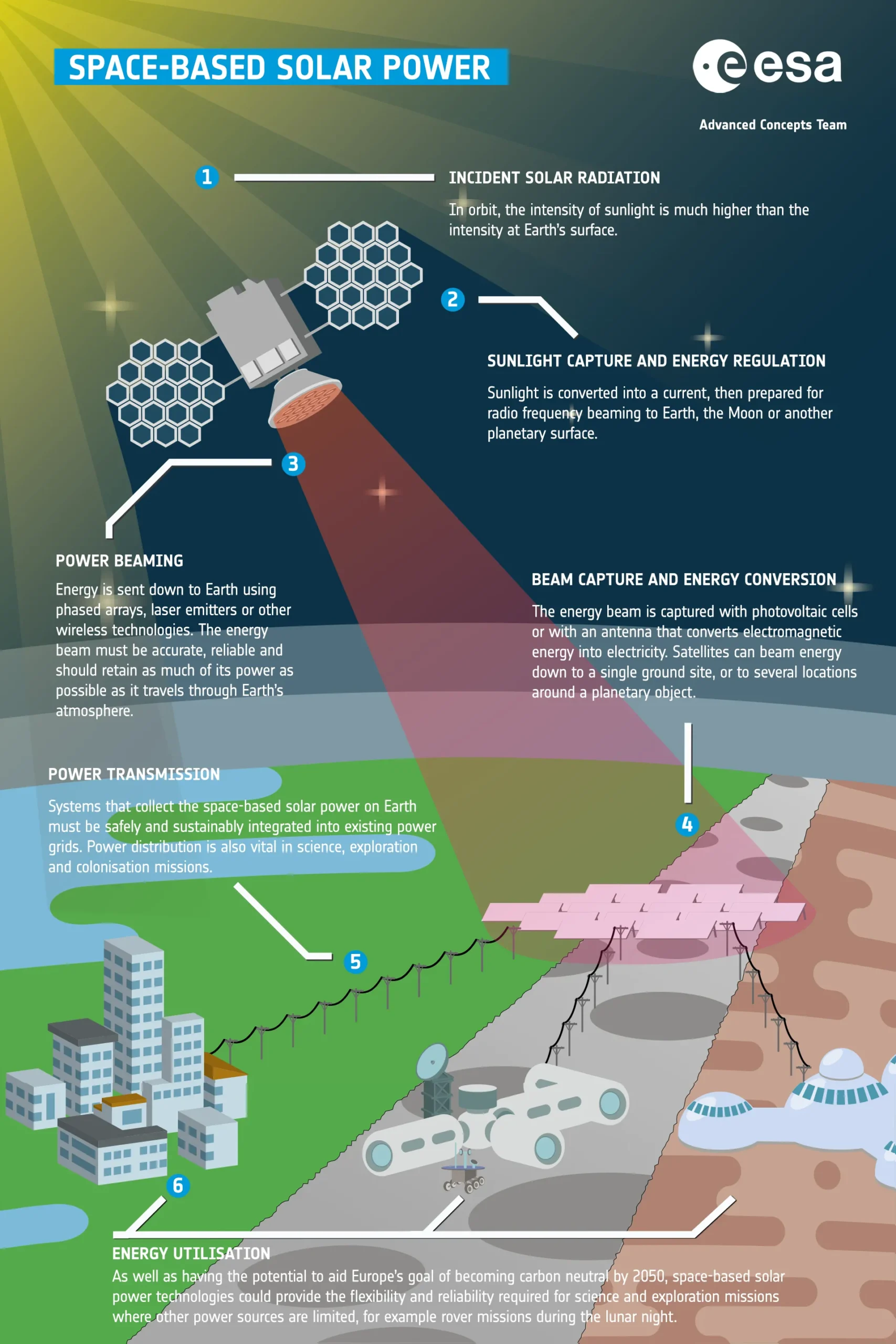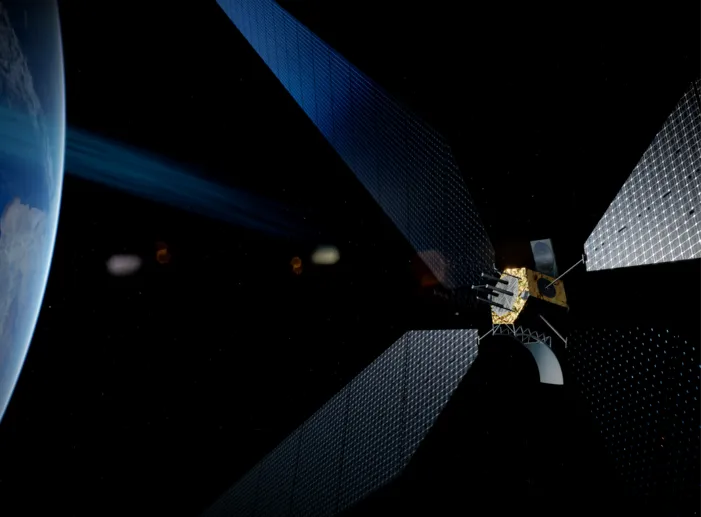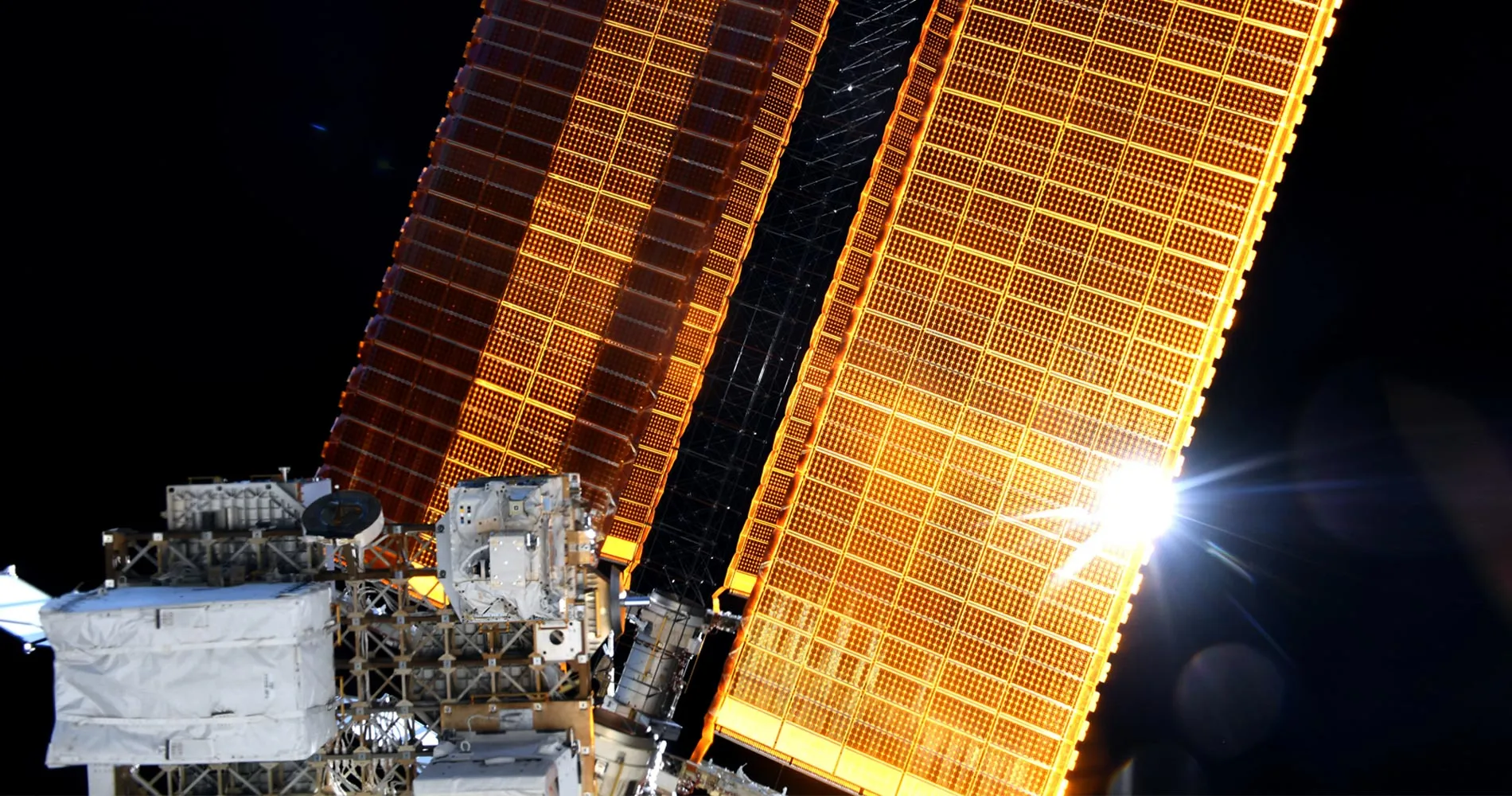Europe, the US and China are locked in a race to farm solar energy using space farms orbiting the earth. ESA, the European Space Agency, initiated its SOLARIS project in 2022. The economic feasibility of space-based solar farms which are now under development, will ultimately determine their fate.
Angeladora Novi
15 April 2024
French version
“Transitioning away from fossil fuels” and tripling renewable energy capacity by 2030 are some of the pledges made by global leaders during last year’s 28th UN annual COP meeting on climate change. UN Secretary-General Antonio Guterres pointed out that staying in line with the Paris Agreement commitment of limiting global heating to 1.5°C requires a complete phase-out of fossil fuels. The outcome of COP 28 can still be considered historic, marking the beginning of the end of non-renewable energy. Yet combating climate change is no easy task. It requires substantial investments or the development of new technologies.
Farming energy in space is one of the most promising and revolutionary new environmentally friendly technologies. Europe is leading the way with the European Space Agency’s (ESA) Solaris project launched in 2022. It aims to evaluate the feasibility and cost-effectiveness of building space-based solar farms. The idea is not new, having been conceived about 50 years ago when technologies were less advanced and funding scarce. Owing to the development of new technologies and the cooperative approach of European countries, ESA is closer to a future where solar farms could potentially become one of the most reliable sources of clean energy.

© ESA
The architecture of a space-based solar farm consists of millions of satellites covered by photovoltaic panels stationed in orbit to capture sunlight and transform it into energy, which would then be transferred wirelessly to Earth. One of the main advantages of such a system is that it provides a continuous source of energy generation due to the absence of clouds and seasons in orbit, particularly benefiting less sunny countries in Europe.
Orbit-based energy stations have a lower environmental impact compared to terrestrial solar farms thanks to their efficiency linked to the constant availability of sunlight. Experts highlight the 50% reduced carbon emissions compared to land-based solar farms thanks to increased productivity, which means generating more energy in less time. Despite these advantages, orbit-based solar farms would not replace terrestrial renewables but complement them.
The development of space-based solar farms would have the capacity to generate 40 times as much energy as on Earth. With energy demand predicted to double in the next 30 years due to exponential population growth expected to reach 9 billion people by 2050, relying on orbit-generated energy could be of paramount importance not only in gradually diminishing non-renewable energy sources but reduce dependence on certain large energy producing countries. The successful outcome of the Solaris study and the subsequent implementation of solar farms has the potential to help Europe become energy independent and reach its climate target goals.
In the long-term this inexhaustible resource farmed in space will decrease costs thanks to future economies of scale. Sharing knowledge among European countries can help reduce costs, boost investment in research and development, and enhance the production capacity of new technologies, which would be essential to make the ESA initiative a success. Companies such as SpaceX and Blue Origin deploy reusable rockets which are about 30 times cheaper than the rockets of the 1970s and 1980s when the idea of installing solar panels in space was first developed. Today the company charges approximately USD 1500 per kilo of payload to reach low-orbit.

Solar power going down. © ESA
Despite the Europeans playing a significant role in the orbit-based solar farms research, they are not the only ones in this new space race as other countries such as the US, the UK, and China are aiming to achieve similar goals. The Asian giant, for example, in 2019, announced its intention to launch the ZhuRi program (“chase the sun”) and install a pilot power station into orbit generating 20 megawatts of power by 2035. At the same time, the British start-up, Space Solar, aims at gradually building a 30 gigawatts scale power plant in space by 2040. Space-based solar will allow the UK to comply with its NetZero national goal by 2050.
In 2021, the US Air Force Research Laboratory (AFRL) has started working on a project called Space Solar Power Incremental Demonstrations and Research (SSPIDR). This project aims to build the technology required to generate renewable energy in space. Arachne is the name of the SSPIDR’s flight experiment, which will test power generation and beaming in the low Earth orbit, planned to be launched in 2025.
Notwithstanding the recent progress and unquestionable advantages of space-generated solar energy, there are still a series of challenges, which cannot be underestimated. One of the most concerning is the question of space congestion, considering that it is estimated that more than 8000 tons of space junk circulate in space, an amount that has been growing steadily and significantly since the start of the orbital age.
The need for an international legal framework to regulate activity and farming in space is becoming ever more pressing. This legal framework would need to address liability of governments and other actors in space, as well as define responsibilities of those using space for their own advancement.
Whether solar farms such as ESA’s SOLARIS project will be feasible ultimately depends on the costs associated with the development, deployment and operation of these plants. ESA estimates the cost of the first gigawatt-scale solar power satellite at approximately EUR 20 billion. This is equivalent to the construction of a new nuclear power plant. Subsequent mass-produced units would benefit from economies of scale, reducing construction costs and bringing power generation down to more than half of that of nuclear power rivaling those of large scale terrestrial solar plants. So although the idea of farming solar energy in space and beaming it down to earth sounds fantastic, there is no such thing as a free l(a)unch.






